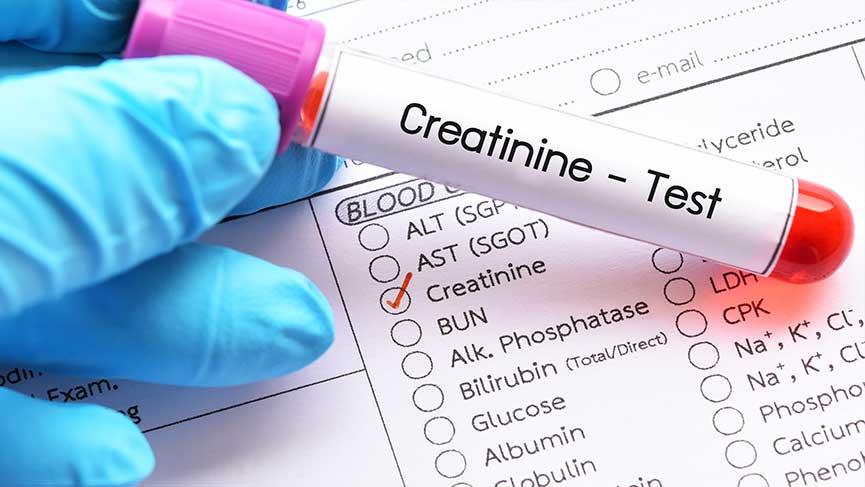What is a normal creatinine level?
60-120 mcmol/L (micromoles per litre).It is used to assess kidney function – the higher the number, the worse the function. But we need to discuss some background first.
What is creatinine?
Creatinine (derived from Ancient Greek κρέας (kréas) meaning ‘flesh’) is a waste product that comes from the normal breakdown of muscle tissue.
Creatine and creatinine – and what exactly is creatinine?
Creatinine is a waste product produced from the breakdown of creatine. Creatine is a chemical that your body uses to supply your muscles with energy.
There is a natural breakdown of muscle tissue when they are used. This is when creatine becomes creatinine, which is released into your bloodstream – and then removed by the kidneys.
The production of creatinine varies very little from day-to-day because it is a product of muscle activity (i.e. not do with the kidneys) and the muscle mass of an individual remains almost constant. Creatine and creatinine are filtered by the kidney, creatine is reabsorbed but creatinine is excreted in the urine.

Everyone has some creatinine in their blood, but too much is usually a sign of a kidney problem.
Note. Creatinine is not a toxin or toxic substance itself. It is used as a marker of the unknown toxins in CKD and AKI.
Purpose
If kidney function decreases, the creatinine level in the blood rises. Hence it is used to estimate kidney function.

Chemical structure of creatinine
Therefore the blood creatinine test is used to check how well your kidneys are filtering your blood. It is usually ordered in combination with other tests as part of a bundle of tests called ‘urea and electrolytes (U+Es)’.
This also includes the sodium, potassium and urea level. U+Es are one of the most frequently ordered laboratory tests and is part of a routine health check.
What is creatinine used for?
The blood creatinine test is used to:
- Diagnose CKD or AKI. These are diseases where kidney function is reduced, either gradually (CKD) or rapidly (AKI). So a raised creatinine is required to diagnose both conditions
- Monitor – changes in kidney function over time
- Decide – whether you need dialysis or a kidney transplant.
So. What is a normal creatinine?
Normal levels
A normal level is 60-120 mcmol/L. Women usually have lower creatinine levels than men because women, on average, have less muscle than men.
Creatinine level does not just depend on someone’s kidney function. It is also affected by your:
- Size and weight – creatinine higher in larger people
- Muscle mass and use – higher in people with bigger muscles that are used
- Exercise – in may mean nothing (i.e. normal) in a muscular young man but 50% kidney function in a small elderly lady.tensive activity (or injury)
- Race – higher in Black people
- Gender – higher in men
- Diet
- Tablets.
This is why a single measurement does not have a lot of meaning. It has to be repeated; and then the results interpreted by a doctor seeing you and taking the above factors into account.
For example a blood creatinine level of 125 mcmol/L (i.e. just above normal).
What do low creatinine levels mean?
Lower creatinine levels indicate malnutrition, severe weight loss, long term illness, and low muscle mass such as in the elderly or an infant.
They also lower in pregnancy as the kidneys work harder, especially in the first trimester (3 months).
Summary
We have described what is a normal creatinine level, and what it means. We hope it has been useful.
https://www.youtube.com/watch?v=KQvHP4yRmNU
Last Reviewed on 16 April 2024
